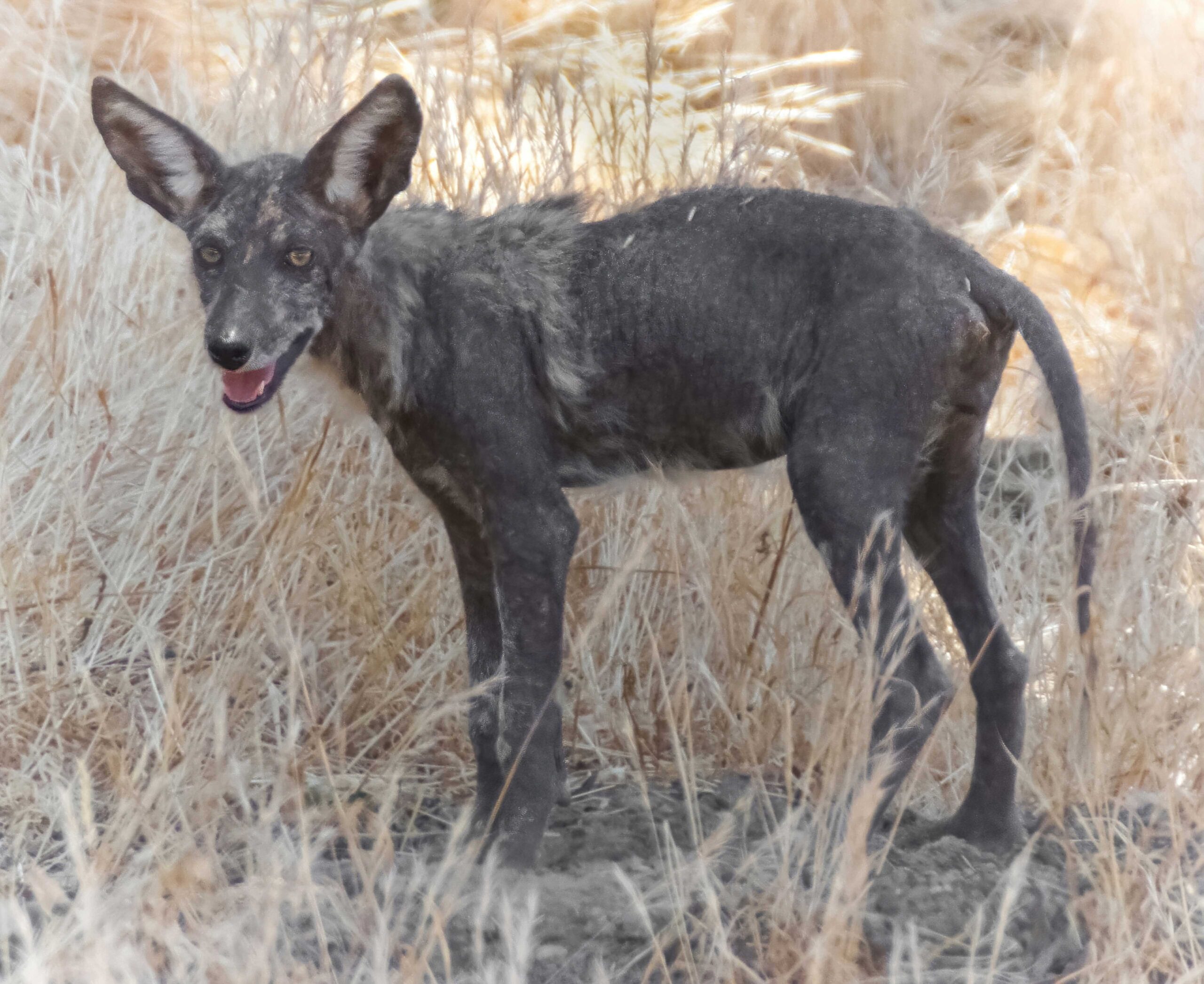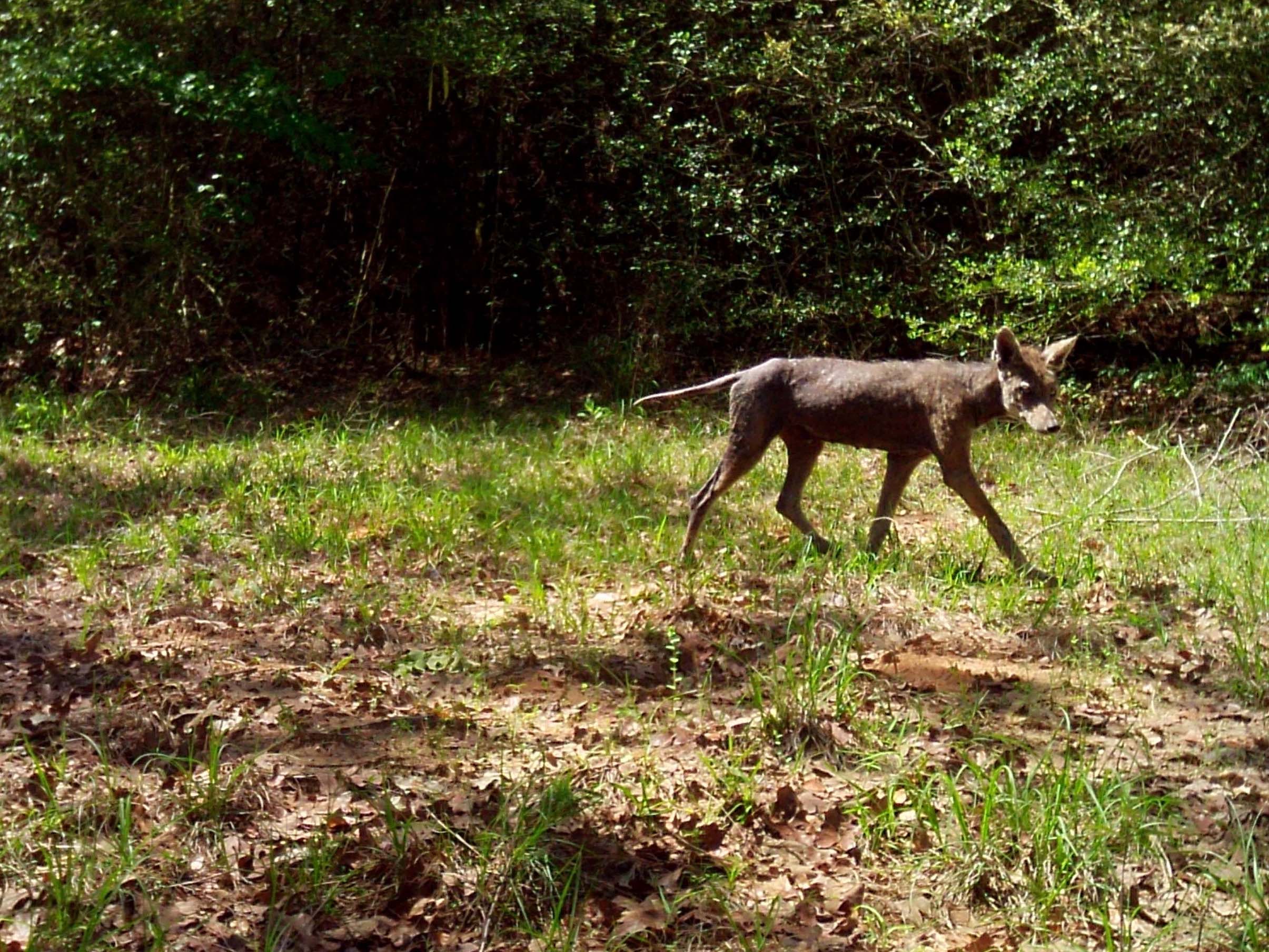From spooky lore to science fact: Unmasking the ‘chupacabra’
Texas A&M AgriLife expert provides scientific explanation for the paranormal creature
With its grey, scaly skin, protruding dorsal spines, menacing fangs and proclivity for small livestock, the mythical chupacabra has stoked both curiosity and fear across portions of the Americas for decades.

Despite its diverse origin stories, a wildlife expert with Texas A&M AgriLife Research said there is a simple explanation to chupacabra sightings — one far more entrenched in science than the supernatural.
If you consider the most common descriptions of the chupacabra, from its physical appearance to its behavior, you’re likely dealing with a coyote that is in the late stages of mange, said John Tomeček, Ph.D., associate professor in the Texas A&M College of Agriculture and Life Sciences Department of Rangeland, Wildlife and Fisheries Management.
“Mange is a debilitating disease that can infect a wide range of fur-bearing mammals,” Tomeček said. “Depending on the animal’s ability to overcome the symptoms of mange, the condition can become chronic, leading to behavioral changes and even death.”
Mange symptoms explain chupacabra’s appearance
In canines, mange is caused by two species of microscopic mites that burrow into the skin causing intense irritation, itching, lesions, fur loss, and scabbing and thickening of the skin.

Tomeček said mange also tends to follow a pattern of progression along the animal’s body.
“On canids, the last place they lose fur is right between the shoulder blades in an area that we call the ruff,” he said. “This fits descriptions of chupacabras having spikes or a ridge along their backs.”
Further amplifying the ridge-like characteristics reported in chupacabra sightings are the emaciated conditions of mange-infested animals.
“Infected animals can become extremely gaunt, and it’s incredibly painful in the later stages,” Tomeček said. “At that point, the animal appears like an otherworldly beast — especially if you see it in the dusky hours of the morning or evening.”
Coyotes aren’t the only common wildlife species that can succumb to infection. Tomeček said he once observed the body of a smaller, cryptic animal that had died of mange.
“I honestly wasn’t sure what I was looking at,” he said. “I had to investigate its teeth and paws before determining it was a raccoon.”
Changes in infected wildlife behavior
Aside from mange embodying the physical characteristics of the legendary chupacabra, the disease alters the typical behavioral patterns of the animal who is now weak and seeking easy access to resources.
“When you have a coyote that is in late-stage mange, they are bolder as far as approaching residential areas to find food because they are desperate,” Tomeček said. “They’re taking risks that an otherwise healthy animal wouldn’t take.”
According to the American Museum of Natural History, the legend of the chupacabra originated in Puerto Rico following reports of livestock deaths in which the animals had seemingly been drained of blood.
Translated from Spanish, the name chupacabra means “goat sucker.”
In most cases, the small livestock killed during suspected chupacabra attacks are confined to cages or corrals, which Tomeček said is consistent with predation from a sick animal.
“Any predatory animal that is debilitated must seek out easier prey because wild prey are typically agile and wary,” he said.
The vampire-like punctures often reported on victims of the chupacabra also correspond with the coyote’s standard predation method of strangulation through multiple bites to their prey’s neck.
“Coyote’s mouths are not good at getting and maintaining a grip, so they have to re-bite,” Tomeček said. “In doing so, they may end up exsanguinating the animal because of puncture wounds to the jugular vein.”
He said reports of chupacabras fully draining an animal of blood may also be explained by how rapidly blood will settle and coagulate within the dead animal, making it appear as though it has been drained.
Wildlife boldness doesn’t equate to aggression
Learn to identify the symptoms of mange in wildlife
Texas A&M AgriLife experts outline the causes of mange and explore the influence of this debilitating disease on animal behavior and appearance.
Although sick wildlife may become bolder in their search for food sources around human development, Tomeček emphasized this does not necessarily translate to aggression.
“I always make the distinction between an animal being bold and an animal being aggressive,” Tomeček said. “Being bold just means an animal is taking risks and doing things that they normally wouldn’t because they’re desperate.”
He said this is especially true in urban environments where homes and businesses produce an abundance of food waste that provides an easy source of sustenance.
“Wildlife like coyotes, bobcats and raccoons are very well adapted to people, so urbanization is actually increasing the abundance of these animals,” Tomeček said. “They are far denser in urban areas than in rural areas; and, as a result, you have an increased opportunity for wildlife encounters.”
What to do when encountering an animal with mange
Because mange is transmissible to humans and domestic animals, Tomeček advises that you do not approach the wildlife and secure your pets. Individuals should also contact their county wildlife biologist with the Texas Parks and Wildlife Department.
Although individuals may have an initial reaction to humanely dispatch the sick animal, it is important to properly identify the animal as it could be someone’s domestic pet with a case of mange.
“There are no known preventative measures for mange, but if you live in a region where the disease is common, it would be wise to consider a regular bathing regime for your working and companion animals that includes some sort of acaricide treatment,” Tomeček said. “Of course, seek appropriate veterinary care when needed.”
Although it can be easy for the folklore and mystery of the chupacabra to overshadow the reality behind these strange sightings, Tomeček encourages Texans to not lose sight of the actual situation.
“When dealing with a ‘chupacabra,’ we are dealing with a real animal — typically a coyote — that’s experiencing a serious health problem,” he said. “Treat the situation accordingly so we can help steward our wildlife resources.”





